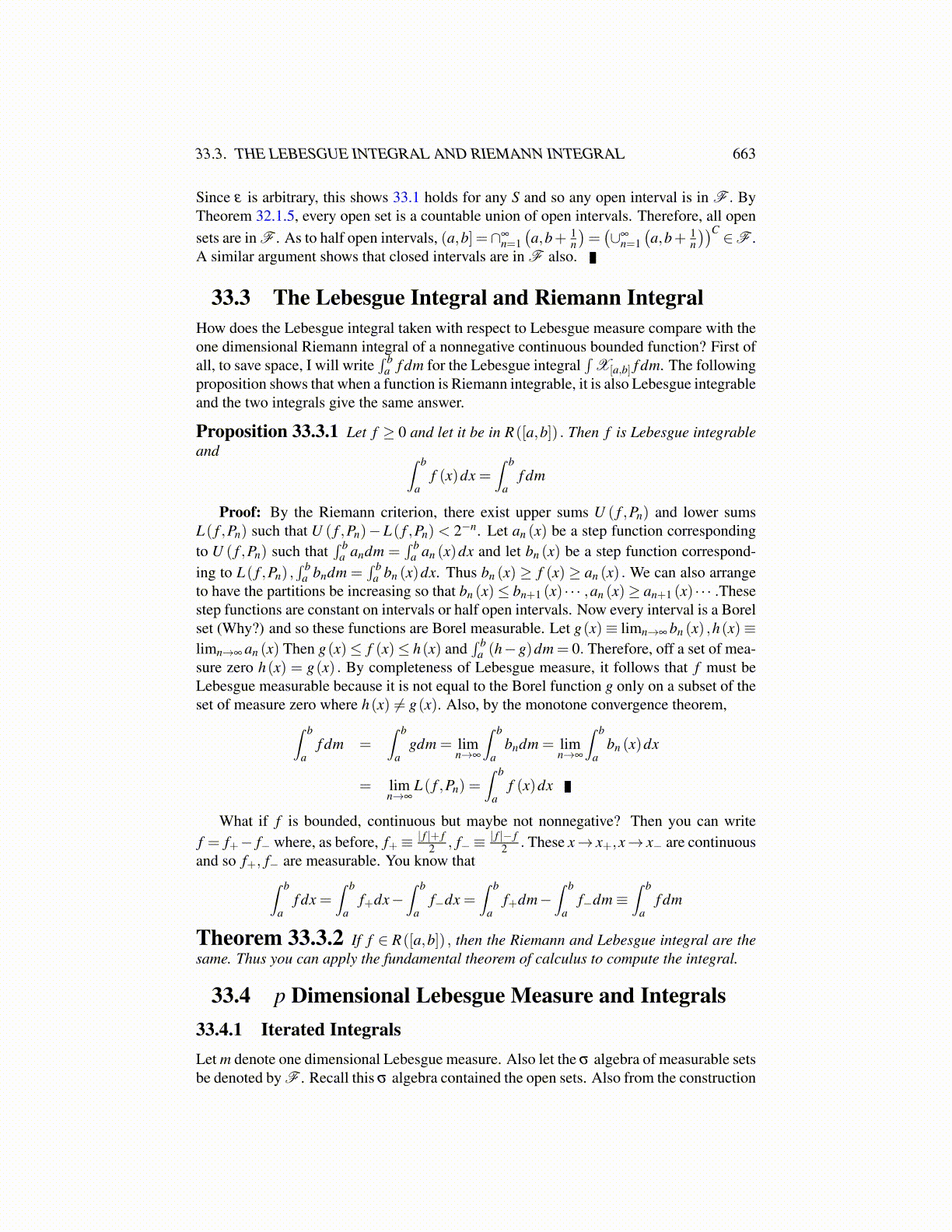
33.6. CHANGE OF VARIABLES FOR NONLINEAR MAPS 663
Theorem 33.5.4 Let L be a linear transformation which is invertible. Then for anyBorel F, L(F) is Borel and
mp (L(F)) = |det(L)|mp (F)
Proof: From linear algebra, there are Li each elementary such that L = L1 ◦L2 ◦· · ·◦Ls.By Corollary 33.5.2, each Li maps Borel sets to Borel sets. Hence, using Lemma 33.5.3
mp (L(F)) = |det(L1)|mp (L2 ◦ · · · ◦Ls (F))
= |det(L1)| |det(L2)|mp (L3 ◦ · · · ◦Ls (F))
= · · ·=s
∏i=1
|det(Li)|mp (F) = |det(L)|mp (F)
the last claim from properties of the determinant.
33.6 Change of Variables for Nonlinear MapsAssume the following:
1. V = h(U) ,U,V open and bounded, h one to one.
2. h,h−1 are C1(Û),C1(V̂)
respectively where Û ⊇U ,V̂ ⊇V .
Let the balls be defined in terms of the norm
∥x∥ ≡ max{|xk| : k = 1, · · · , p}
Note that |x| ≥ ∥x∥ ≥ 1√p |x| so it doesn’t matter which norm you use in the definition of
differentiability. ∥·∥ happens to be a little more convenient here.Then define
φ (x,v)≡ ∥h(x+v)− (h(x)+Dh(x)v)∥∥v∥
(33.6)
Then φ is continuous on U × B(0,1) with the convention that φ (x,0) ≡ 0. Thus it isuniformly continuous on this compact set and so there exists δ > 0 such that if ∥v∥ < δ ,then
|φ (x,v)−φ (x,0)|= |φ (x,v)|< ε, (33.7)
this for all x ∈U .
h(x+v)−h(x) = Dh(x)v+o(v)
= Dh(x)(v+Dh−1 (h(x))o(v)
)Let f : V → R be a bounded, uniformly continuous function.
Let Bm be a collection of disjoint half open rectangles as in Lemma 32.1.6 such thateach has diameter no more than 2−m and each rectangle of Bm+1 is either a subset of arectangle of Bm or is equal to a rectangle of Bm such that ∪Bm = U . Let m be largeenough that the diameters of all these half open rectangles are less than δ . Denote therectangles of Bm as {Rm
i }∞
i=1 and let the center of these be denoted by x(mi). Also let mbe large enough that
| f (h(x(mi))) |det(Dh(x(mi)))|− f (h(x)) |det(Dh(x))||< ε for all x ∈ Rmi
A basic version of the theorems to be presented is the following.